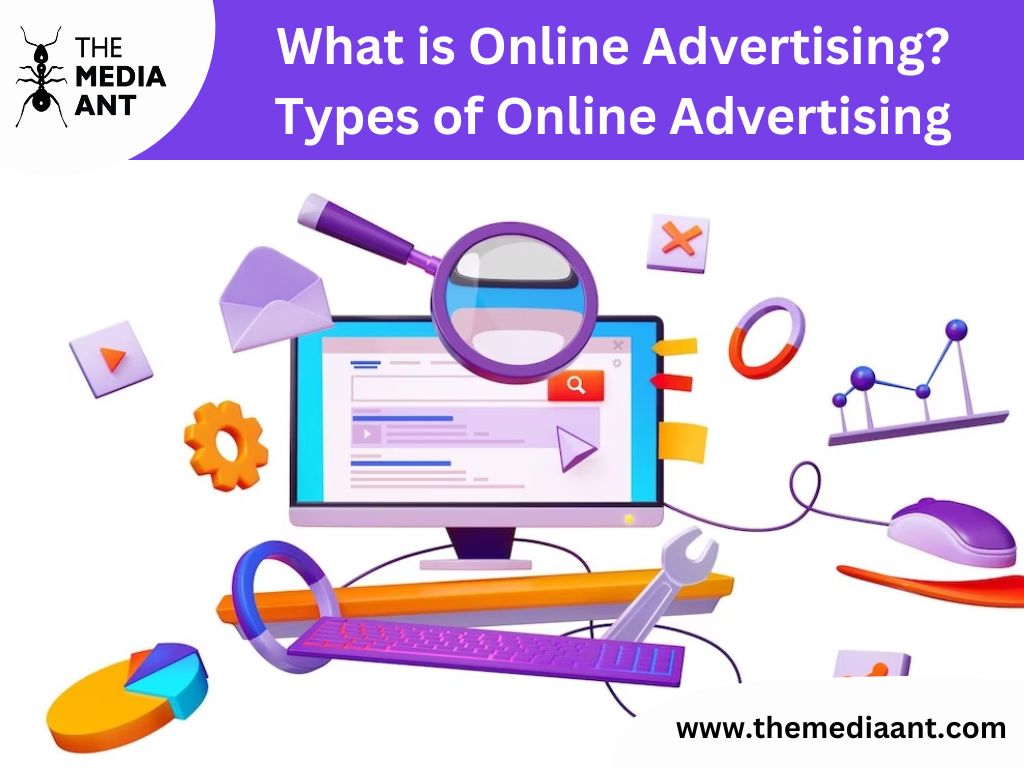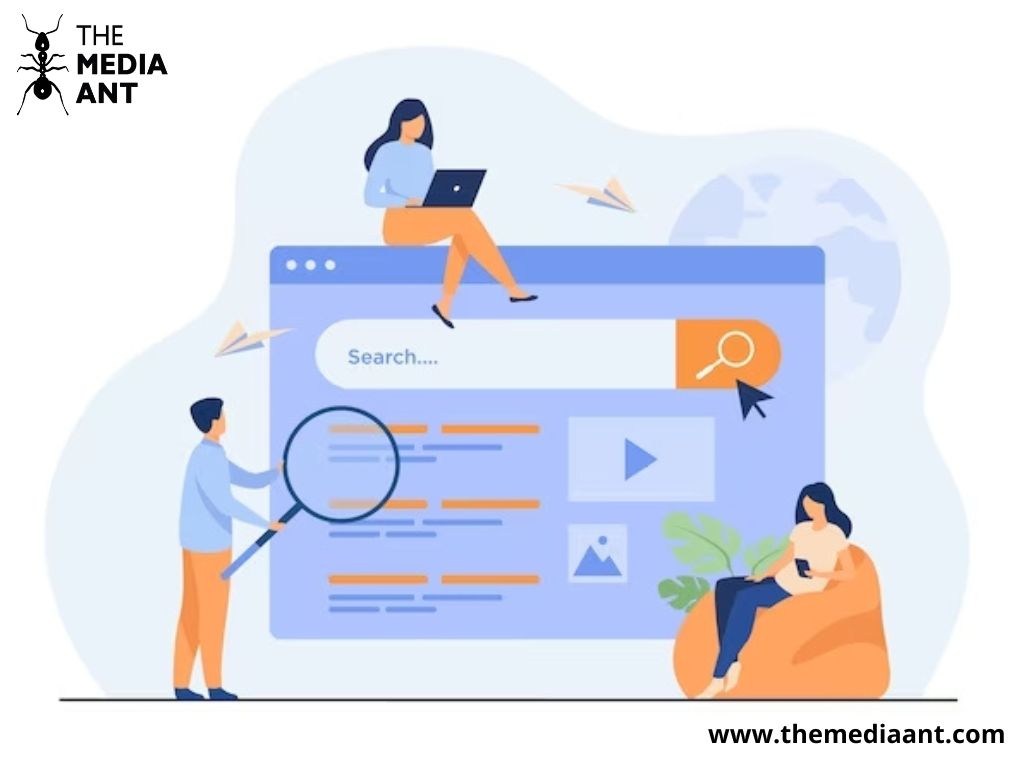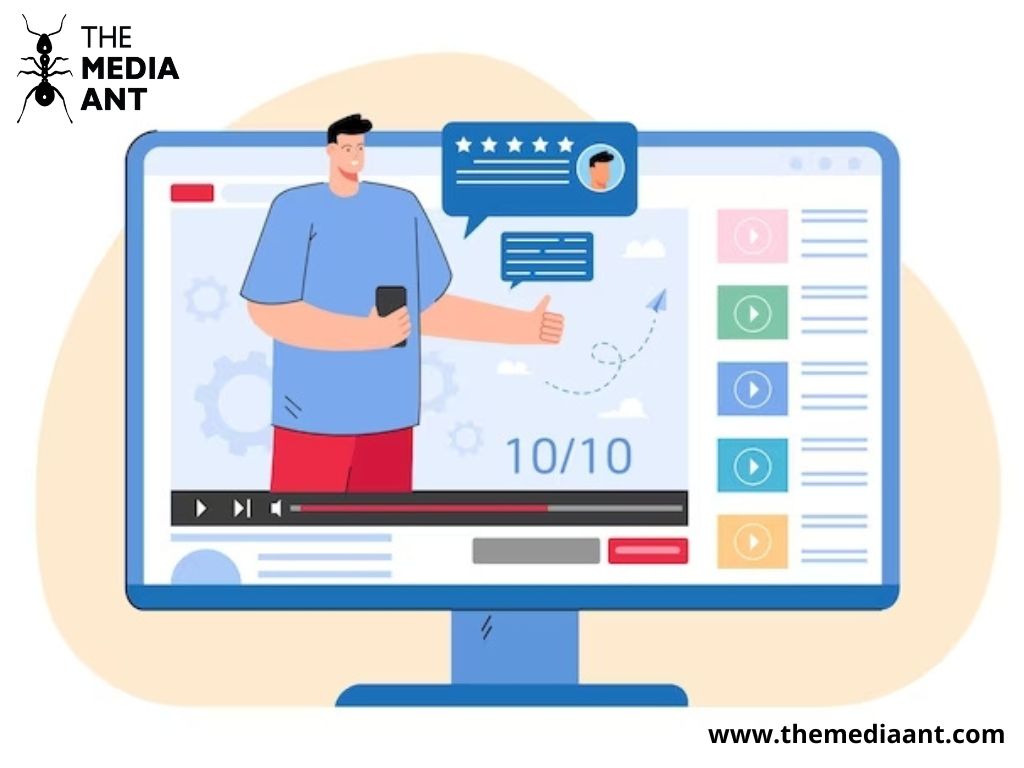Have you ever questioned why those internet advertisements seem to follow you around? From your morning news website to your evening shopping spree, it feels like the internet has a secret advertising conspiracy going on. Online advertising is, in fact, an innovative, complex sector that is continuously changing. However, don’t be put off by that; it’s also a fascinating world filled with ingenuity, imagination, and, yes, a little mischief. So let’s explore the definition of online advertising and learn about its various types in this article.
What is Online Advertising?
Online advertising is an effective form of marketing that uses the internet and digital technologies to promote products and services, helping businesses reach their target audiences and increase brand awareness. Online advertising works by displaying ads on websites, social media platforms, search engines, and other online channels.
Advertisers are using modern digital advertising tactics to pay for each click or impression they generate from their ads, with the advantage of being able to monitor the performance of their campaigns in real time. Implementing the right strategies can help businesses maximize their return on investment from online advertising, ensuring that every penny spent is worthwhile.
8 Types of Online Advertising
Online advertising covers a range of strategies for promoting goods, services, or brands online. Digital ads, which include a variety of display advertising such as banner ads, rich media ads, video ads, and more, are among the most well-liked kinds of online advertising.
Search advertising, which appears alongside search results on search engines like Google, is another well-liked category of online advertising. With the help of these digital ad formats, companies can instantly monitor the success of their marketing initiatives and connect with specific target audiences.
Other types of online advertising include social media advertising, email marketing, influencer marketing, and native advertising, in addition, to search and display advertising. Social media advertising enables companies to target particular demographics on social media sites like Facebook, Instagram, and Twitter.
Sending marketing emails to a specific audience of subscribers is known as email marketing. Influencer marketing entails collaborating with people with a social media following to promote goods or services. Ads incorporated into a website or app’s organic look and feel and created to blend in with the information around them are referred to as “native advertising.” Online advertising has become increasingly important with the growth of e-commerce and the expanding usage of the internet for daily activities.
1. Native Advertising
In order to make it less invasive and look a natural part of the user experience, native advertising refers to a type of online marketing in which the ad content is blended into the design and format of the platform on which it appears.
Native advertisements blend in perfectly with the surrounding content, which makes them less intrusive and more interesting for the audience than typical display ads. Since native advertisements can be displayed on apps or websites pertinent to the goods or services being sold, they are an efficient approach to reaching niche audiences.
Compared to other forms of internet advertising, this type can increase conversions, engagement rates, and brand memory. Additionally, because native advertising is incorporated into the platform’s content, they have a higher degree of native SEO value and can boost search engine optimization by adding more relevant information for search engines to index. Due to its more effective and non-intrusive means of reaching target audiences, native advertising is quickly gaining popularity as a type of online advertising.
2. Search Engine Marketing
Utilizing the strength of search engines to promote websites and increase traffic is known as search engine marketing (SEM), and it is a very efficient type of digital advertising. The objective of this dynamic marketing approach is to raise the visibility of websites in search engine results pages (SERPs), generate qualified leads, and increase sales by using paid advertising strategies such as audience targeting, keyword research, and ad placement.
The foundation of a successful SEM campaign is a solid grasp of the target market and the search terms they use to find goods and services similar to those provided by the company. With the use of this information, a strategic plan is created that aims to provide highly relevant and targeted advertisements to the correct audience at the right time. SEM campaigns are continuously monitored and analyzed for essential metrics, including click-through rate (CTR), conversion rate, and cost-per-click, to ensure the highest return on investment (CPC).
SEM may give companies a competitive edge, boost brand recognition, and help them reach their online marketing objectives with the correct strategy. Whether you run a small or large business, SEM can assist you in connecting with your target market, increasing website traffic, and expanding your company.
3. Display Advertising
Display advertising uses eye-catching and practical ad placements on websites, social media platforms, and mobile devices to attract potential customers and raise brand awareness. This type of digital advertising uses various forms, including banner ads, videos, and rich media, to capture viewers’ attention and convey a marketing message. Clear awareness of the target demographic, their interests and behaviours, and the websites and platforms they regularly use are the foundation of successful display advertising campaigns.
In order to reach the appropriate people at the right time, a strategy is developed using this data that includes targeting options, placement techniques, and visually appealing and pertinent ad creatives. To ensure that the ads successfully engage audiences and produce the required results, display advertising campaigns are continuously monitored and analyzed for essential metrics like impressions, click-through rate (CTR), and conversion rate.
Display advertising may offer you a measurable, cost-effective way to reach your target demographic and meet your marketing objectives, whether you are a small business trying to build brand awareness or a huge corporation trying to generate sales and conversions.
4. Mobile Advertising
Reaching potential clients on their mobile devices, where they spend most of their time, is extremely effective with mobile advertising. In order to offer extremely relevant and targeted ads to viewers, this type of digital advertising makes use of the special features of mobile devices, such as location-based targeting and push notifications.
A thorough understanding of the target audience and their activities, including the applications they use, the hours of the day when they are most active, and their location, is the first step in creating a successful mobile advertising campaign. Using this data, a strategy is created to communicate the right message to the right audience at the appropriate moment.
Mobile advertising campaigns are continuously improved using measures like click-through rate (CTR), conversion rate, and cost-per-click (CPC), which guarantee that the ads are achieving the desired objectives and reaching the target audience as efficiently as possible.
5. Social Media Advertising
Advertising on social media is an effective way to connect with potential clients where; they spend an increasing amount of time: on those platforms.
Social media advertising targets audiences with ads highly relevant to their interests, behaviors, and demographics by utilizing the data and targeting capabilities of platforms like Facebook, Instagram, and Twitter.
A solid grasp of the target demographic, the platforms they utilize, and the material they engage with is the foundation of any effective social media marketing effort. Using this data, a strategy is created to communicate the right message to the right audience at the appropriate moment. Continuous ad optimization using data like click-through rate (CTR), impressions, and conversion rate guarantees that the ads achieve the required results and successfully engage the target audience.
6. Email Marketing
Email marketing is a very efficient approach to connecting with potential consumers, establishing relationships with them, and increasing conversions. With the use of email, this type of digital marketing reaches target consumers with communications that are highly relevant and individualized.
Understanding the target audience and their preferences, such as the kind of material they prefer to receive and the frequency of communication, is the first step in creating a successful email marketing campaign. Using this data, a strategy is created to communicate the right message to the right audience at the appropriate moment. Continuous improvement through open rate, click-through rate (CTR), and conversion rate guarantees that email campaigns produce the desired effects and engage the target audience.
7. Video Advertising
Through the use of video content, video advertising is a very successful and engaging approach to connecting with potential clients. Video advertising offers a rich and immersive experience that boosts brand exposure, drives engagement, and drives conversions through platforms like YouTube, Facebook, or Instagram.
A thorough assessment of the target demographic and the kind of video content that would engage them most successfully is the first step in developing a successful video advertising campaign. Using this data, a strategy is created to communicate the right message to the right audience at the appropriate moment. Continuous improvement of the video advertising performance through metrics like views, engagement rate, and conversion rate ensures that they achieve the desired goals and successfully interact with viewers.
8. Retargeting and Remarketing
Retargeting and remarketing are two related internet advertising strategies that let companies target customers who have already interacted with their website or brand.
Retargeting is the practice of displaying advertising to visitors who have visited a brand’s website but have yet to take a desired action, such as completing a purchase, using cookies or pixel tracking. This encourages the potential client to return to the website and become a paying client.
On the other side, remarketing takes a similar technique but concentrates on previous clients. Businesses may use this to display tailored advertisements to clients who have already made a purchase, enticing them to do so again or try out other goods and services.
Retargeting and remarketing are successful because they allow companies to connect with clients who are already aware of their brand and have expressed interest in their goods or services. Businesses may boost the chance of conversion and return on investment for their advertising spend by focusing on these users.
There are several ways to employ retargeting and remarketing, such as display advertisements on websites, social media ads, and email campaigns. Combined with other advertising strategies like search engine marketing and social media advertising, they are influential in building a comprehensive and successful online advertising plan.
Frequently Asked Questions on Online Advertising
1) How many types of online advertising are there?
There are 8 types of online advertising.
2) What are the 8 types of online advertising?
The 8 types of online advertising are:
a. Native Advertising
b. Search Engine Marketing
c. Display Advertising
d. Mobile Advertising
e. Social Media Advertising
f. Email Marketing
g. Video Advertising
h. Retargeting and Remarketing
3) How does internet advertising work?
Internet advertising is a type of advertising that sends customers marketing messages over the internet. Advertisers may target specific audiences through various online channels, such as search engines, websites, social media platforms, and email. In order to offer tailored adverts, internet advertising often uses cookies and tracking technology to collect information about customer behavior.
Display, search engine, social media, and video ads are the most popular types of online advertising. A cost-per-click (CPC) model, where advertisers pay each time a user clicks on the ad, or a cost-per-impression (CPM) model, where advertisers pay each time the ad is displayed to a user, is how advertisers get compensated for this advertising.
4) How has internet advertising changed?
The internet advertising sector has experienced a considerable upheaval with consumer behavior and technological changes. The increased use of social media and mobile devices has given advertisers new ways to connect with customers.
Advertisers leverage data and AI-driven strategies to provide more individualized and pertinent adverts. The move to programmatic advertising, where advertisements are purchased and sold automatically, has improved efficiency and targeting options. Overall, online advertising is still developing and adapting to the market.











